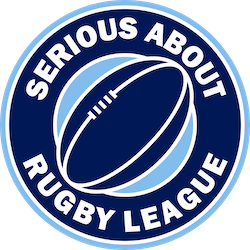
I have been a Rugby League spectator since I was a kid. I have been to hundreds of matches and watched considerably games on TV.
In all that time I don’t recall ever witnessing anything quite like the furore generated by what occurred in the dying seconds of the England v Tonga game in Auckland last weekend and the subsequent fall-out that has followed.
For those of you who have been living in the far reaches of the known universe and may have missed the controversial moment, what happened is this.
England were leading 20-0 with 8 minutes to go. Tonga came back with 3 converted tries, bringing the scores to 20-18. Up stepped big Andrew Fifita in the dying seconds with a powerful carry, barging through the tired England defence, only to drop the ball feet from a certain try. Absolutely no way back for England if he had scored. No question. He did manage to re-gather the ball, plonking it down properly over the try line. But referee, Matt Cecchin wasted no time in deciding that Fifita had knocked the ball on and did not award the try. In fact, he blew the whistle for full-time. The Tongans claimed that the ball had been stripped by Elliot Whitehead and the video referee on the day, namely Englishman Ben Thaler, should have been asked to adjudicate on the incident. Mr. Cecchin, who had quickly consulted with his touch judge for a confirmed knock-on at the time was having none of it and the players were asked to leave the pitch. It is worth stating that the touch judge mentioned was Robert Hicks. Another English official.
Whether or not the correct on-field call was made by referee is controversial enough on its own, but is nothing compared to the kerfuffle that has followed relating to his refusal to refer the try/no try to the capable scrutiny of Mr. Thaler. And on this point I think the Tongans had a perfectly reasonable and expectant anticipation that he would have sent the decision “upstairs”.
And why not! I believe that if you were trying to sell the idea of a Video Referee to another sport today, the incident would look like it was made for this type of innovation.
Thousands of Tongans protesting on the streets. Letters of complaint flying here, there and everywhere. All the praise, support and goodwill shown towards the Tongan players and fans from the wider Rugby League world diminishing daily due to their inability to accept defeat. And all this not because the ref made a wrong call, but because he didn’t go to the technology available that may have prevented all this nonsense.
Since its introduction in the Super league 21 years ago, video referee playback technology has not been without its problems. Critics will argue that it slows the game down too much and that there are too many inconsistencies with what is and what isn’t referred to the VR. Those in favour – me being one of them, think that in general it works how it is supposed to and 9 times out of 10 the correct decision is made. But, yes, there is too much inconsistency with its use at times. Firstly we tend to forget that they are only in use at the televised games. Unlike the NRL matches, games that are not on TV are refereed like they always have been. You can be ten feet from the action, but you’re only getting one look at it unless it’s on telly. I’m sure we’ve all had that weird thing happen when a try is scored at a live match you’re at, and for a few seconds you wait for the replay before realising it’s not going to happen.
For me, the controversy around VR’s is to do with what is and what is not sent up to them. We all have examples of “why did he go to the video with that. It’s obviously a try” and “I can’t believe he didn’t let the VR have a look at that. His foot was out”.
From a European perspective, probably the most infamous refusal to go to “the big Screen” (until last week, that is) was the 2007 Magic Weekend game at Cardiff between Bradford and Leeds. Regardless of Steve Ganson’s wrong call that gave Leeds a last minute penalty, there were about 5 Leeds players offside when Kevin Sinfield took the kick. It rebounded off the post into the waiting arms of one of the offside players, Jordan Tansey, who scored the winning try as the hooter sounded. Ganson gave the try and did not refer it. The VR would have had absolutely no choice but to rightly disallow the try if he had been consulted.

Leeds celebrate Jordan Tansey’s famous ‘offside’ try at the 2007 Magic Weekend.
There are examples of the VR themselves getting things disastrously wrong as well. Another Magic Weekend game, this time at The Etihad Stadium between Hull FC and Hull KR. Hull player Chris Green is a clear few yards offside when the ball is thumped up in the air, he then gathers the ball and scored what turns out to be the winner. It had been referred to the VR – Mr. Ganson again, who allowed the try to stand, despite the obvious infringement. He actually apologised afterwards to the Hull KR staff for getting it wrong.
Returning to the Tonga game. Do I think the referee made the right call regarding the knock on? Well, yeah I do.
Do I think he was right to not refer it to the VR. No I don’t. He would have most likely have gone to Mr. Thaler with a “no try”. I cannot see how that call would have been overturned. That might have been the end of it.
Of course the added intrigue would have been that having decided Mr. Cecchin was right, there would have been conspiracy theorists queuing up to point out that Thaler had clearly favoured his national team. Sometimes you can’t win whatever you do. But I will resist the temptation to go fully off on a tangent about neutral officials being the only way forward if we are to avoid additional controversies at future international matches.
My solution regarding the Video Referees, would be for them to review EVERY try. I’m not a big fan of the on-field “Try/No Try” rule and would like to see them get rid of it and let the VR’s make the decisions cold, having been asked what to look for. Perfectly obvious tries would take seconds to review and I would re-introduce the benefit-of-doubt call for the not so obvious ones.
We have got to decide whether we invite future discord and division within the Rugby League community or do we fully embrace and rely on the technology available. Minimise the chances of getting it wrong and in doing so we cut down the risk of losing emerging, strong nations who may just be the future of our great game. For a team that have performed as well as Tonga, it is a shame that what happened last week and the days that have followed could well have been averted with some simple hand signals to the Video Referee from the Match Referee.
MAIN PHOTO: Andrew Cornaga/SWpix.com/PhotosportNZ




























